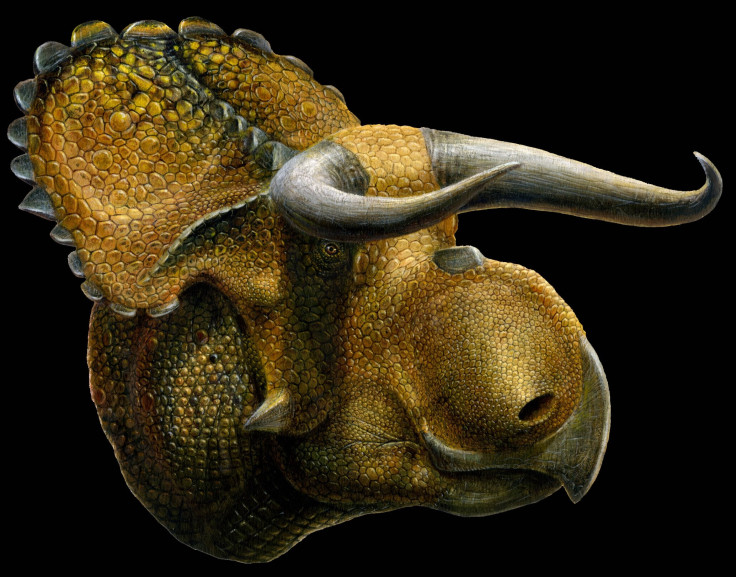Species Of 15-Feet-Long Horned Dinosaur, Which Roamed Utah 76 Million Years Ago, Discovered [PHOTOS]

Researchers have unearthed a new species of horned dinosaur belonging to the Triceratops family at the Grand Staircase-Escalante National Monument in southern Utah.
With its distinctive schnoz, the species has been named “Nasutoceratops titusi” -- the first part of the name meaning “big-nose horned face,” the second part honoring Alan Titus, a paleontologist at the national monument.
According to the research, published on Wednesday in the Proceedings of the Royal Society B, Nasutoceratops measured about 15 feet in length and weighed 2.5 tons. It was a huge plant-eater that lived in the region that is now southern Utah about 76 million years ago, during the Campanian stage of the Late Cretaceous period, which spanned a period approximately 84 million years to 70 million years ago.
Horned dinosaurs, or “ceratopsids,” had huge skulls, bearing a single horn over the nose, one horn over each eye, and an elongated, bony frill at the rear. But Nasutoceratops stands out from its relatives with its oversized nose and exceptionally long, curving, forward-oriented horns over the eyes. Its bony frill is also said to have been comparatively plain.
“The jumbo-sized schnoz of Nasutoceratops likely had nothing to do with a heightened sense of smell -- since olfactory receptors occur further back in the head, adjacent to the brain -- so the function of this bizarre feature remains uncertain,” Scott Sampson of the Denver Museum of Nature & Science, who is also the study’s lead author, said in a statement.
Researchers claimed that Nasutoceratops, like other horned dinosaurs, used its horns and frills to intimidate members of the same sex and to attract members of the opposite sex.
“The amazing horns of Nasutoceratops were most likely used as visual signals of dominance and, when that wasn’t enough, as weapons for combatting rivals,” Mark Loewen, a researcher at the Natural History Museum of Utah, said.
According to the study, the latest findings carry strong evidence of dinosaur provincialism in Laramidia, an island continent formed when a shallow sea flooded the central region of North America, isolating the western and eastern portions for millions of years during the Late Cretaceous period.
Nasutoceratops lived at a time when other closely related horned dinosaurs lived in Alberta, a province of Canada, the study said.
“Today, thanks to an abundant fossil record and more than a century of collecting by paleontologists, Laramidia is the best-known major landmass for the entire Age of Dinosaurs, with dig sites spanning from Alaska to Mexico,” a statement from the Natural History Museum of Utah, said.
© Copyright IBTimes 2024. All rights reserved.






















